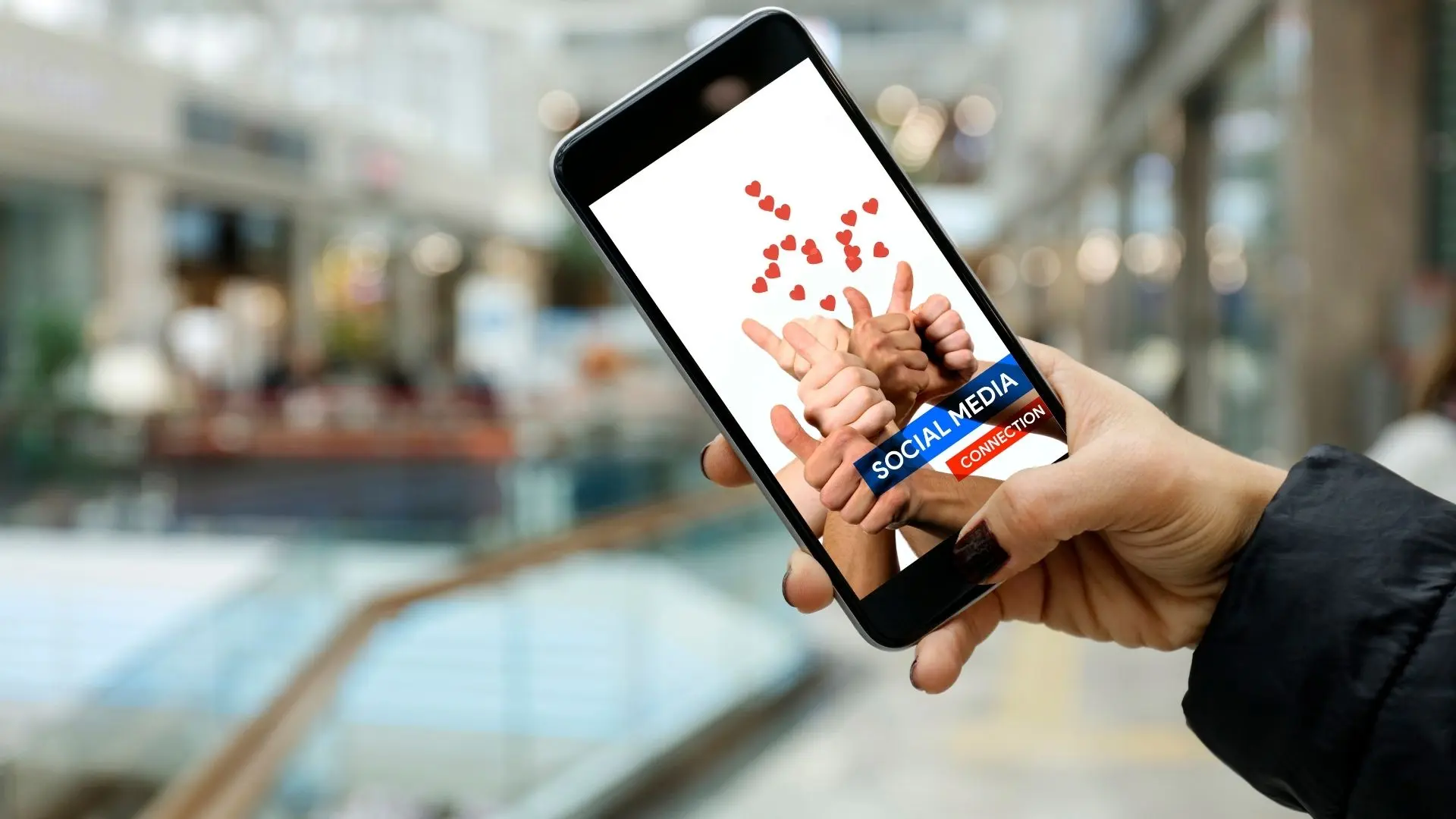Master Paid Advertising Strategies for Social Media Success

In the dynamic world of digital marketing, paid social advertising and social media marketingdrive brand awareness and convert audiences into customers. This article explains how to design, implement, and refine paid social media campaigns aligned with business outcomes, covering objectives, audience targeting, ad creative development, budget management, performance optimization, and advanced techniques to deliver tangible ROI. Insights from platforms such as Meta, Twitter, and LinkedIn are provided for both newcomers and seasoned digital marketers.
Defining Clear Objectives for Your Paid Social Media Campaigns
Establish clear objectives to align every ad dollar with business outcomes. This ensures proper resource allocation and effective measurement.
Aligning Ad Goals With Overall Business Outcomes
Mapping key performance indicators (KPIs) to business targets—such as increasing sales, boosting website traffic, or enhancing brand engagement—drives campaign effectiveness. For example, emphasizing dynamic product ads with a clear call-to-action and conversion tracking can directly boost online sales. Past performance data reinforces that short-term tactics align with long-term goals.
Setting Specific, Measurable, Achievable, Relevant, Time-Bound (SMART) Targets
SMART targets create campaign accountability. Marketers may set goals like a 20% lift in click-through rate (CTR) or a 15% increase in conversion rate over a set period. Quantifiable and time-bound targets allow teams to measure progress, adjust tactics, and scale successful strategies, fostering a results-driven advertising culture.
Identifying Key Performance Indicators (KPIs) for Social MediaAdvertising
KPIs such as click-through rates, conversion rates, cost per acquisition, and return on ad spend (ROAS) offer real-time insights into campaign efficiency. Regular monitoring of these indicators helps pinpoint weaknesses and informs necessary adjustments—ensuring the campaign remains cost-effective and goal-oriented.
Understanding Different Campaign Objectives Across Platforms
Platforms offer distinct ad formats and objectives. Meta favors visual storytelling via video or carouselads, while LinkedIn emphasizes lead generation. Knowing these nuances allows digital marketers to tailor each campaign to the correct objective—whether for awareness, engagement, or conversion—thus optimizing ad content for platform-specific behavior.
Identifying and Targeting Your Ideal Audience With Paid Social Advertising

Effective audience targeting improves engagement and maximizes ad spend efficiency. Research and segmentation ensure ads reach receptive users.
Creating Detailed Buyer Personas for Effective Ad Targeting
Detailed buyer personas—built on demographics, interests, behavior, and purchasing history—help tailor messages that resonate. For instance, a premium web design service might target tech-savvy entrepreneurs aged 30–45 interested in digital transformation. Such profiles refine messaging and creative design for more impactful strategies.
Utilizing Platform-Specific Audience Segmentation Tools
Platforms like Facebook and LinkedIn offer sophisticated segmentation tools that target users based on behavior and interests. This precise targeting reduces wasted spend and increases ad effectiveness by focusing on individuals most likely to convert.
Implementing Re-targeting Strategies for Engaged Prospects
Re-targeting reaches users who have engaged with the brand but not converted. By using historical website data and behavior analytics, marketers can create follow-up messages that address objections or offer incentives, thereby boosting conversion rates.
Exploring Lookalike Audiences to Expand Reach
Creating lookalike audiences by analyzing characteristics of best customers allows marketers to discover new, similar prospects. This method expands reach and taps into new markets without reinventing the targeting process, effectively scaling campaigns.
Refining Audiences Based on Campaign Performance Data
Continuous refinement using A/B testing and performance metrics allows teams to adjust parameters such as age, geography, and interest. This iterative process focuses ad spend on segments with the highest engagement.
Crafting Compelling Ad Copy and Visuals for Social Media Platforms

Effective ad copy and visuals are essential for capturing attentionand enhancing brand recall.
Writing Persuasive Ad Headlines and Descriptions
Strong headlines and concise, persuasive descriptions are vital. Using active verbs and measurable benefits—for example, "boost conversion rates by 25%"—helps communicate value clearly. Tailoring language based on demographic data increases relevanceand appeal.
Designing Visually Appealing Images and Videos
High-quality images and videos that align with brand aesthetics differentiate ads from competitors. Dynamic elements like infographics, animated videos, or carouselads increase engagement, ensuring visuals work in harmony with the overall message.
Tailoring Ad Creatives to Specific Social Media Channel Formats
Adapting creative content to meet platform specifications improves user experience. Vertical videos work best on Instagram and Snapchat, while horizontal formats are optimal for YouTube and Facebook. This adaptability maximizes exposure and performance across devices.
A/B Testing Different Ad Creative Elements
A/B testing different headlines, images, calls to action, and colors identifies the most effective combinations. Regular testing informs creative decisions and improves each ad variant based on empirical performance data.
Ensuring Ad Compliance With Platform Policies
Adhering strictly to platform guidelines—such as text-to-image ratios and trademark rules—ensures high ad deliverability and avoids account suspensions. Regular audits maintain compliance as policies evolve.
Strategic Budget Allocation and Bid Management in Social Media Advertising

Effective budget allocation and bid management are essential to maximize ROAS while maintaining cost efficiency.
Determining an Optimal Advertising Spend for Social Media
Evaluating historical data, market trends, and business objectives helps determine the ideal ad spend. For example, allocating 15% of a marketing budget to social mediaads might be adjusted based on performance to fully leverage each dollar.
Understanding Various Bidding Strategies and Their Impact
Choosing between CPC, CPM, or CPA models depends on campaign objectives. CPC drives traffic, while CPA is ideal for conversion-focused campaigns. Selecting the right model aligns spending with desired outcomes.
Allocating Budget Across Different Platforms and Campaigns
Diversification across platforms like Meta, LinkedIn, and Twitter spreads risk and taps into various audiencesegments. A balanced strategy prevents overreliance on one channel and optimizes overall campaign performance.
Monitoring Ad Spend and Adjusting Budgets in Real-Time
Real-time analytics allow marketers to monitor spending and quickly adjust budgets. By reallocating funds from underperforming ads and scaling successful ones, teams can optimize ROI even during campaign execution.
Maximizing Return on Ad Spend (ROAS) Through Smart Bidding
Smart bidding leverages machine learning to automatically adjust bids in real time. During peak engagement, higher bids secure valuable impressions; during off-peak times, lower bids control costs—all contributing to sustained competitive performance.
Analyzing Performance and Optimizing Paid Advertising Strategies for Social Media

Continuous performance analysis is key to refining campaigns and sustaining impact.
Setting Up Conversion Tracking and Analytics
Installing pixels and tracking codes monitors user behavior, allowing marketers to measure ad effectiveness in real time. This data guides budget adjustments and creative changes, ensuring campaigns remain aligned with KPIs.
Regularly Reviewing Campaign Metrics and Reports
Routine reviews of metrics such as engagement, CTR, and conversion rates provide a clear picture of performance. Detailed dashboards and reports enable immediate strategy adjustments to capitalize on emerging trends.
Identifying Underperforming Ads and Areas for Improvement
Data-driven analysis helps identify ads or targeting parameters that are underperforming. Experimenting with new creative formats or adjusting messaging based on these insights can significantly improve outcomes.
Implementing Data-Driven Adjustments to Campaigns
Rapid feedback from analyticstools allows teams to refine targeting, adjust bidding, and update creative content. This agile approach ensures that every component is optimized in real time.
Scaling Successful Paid AdvertisingStrategies on Social Media
Once effective strategies are proven, scaling involves increasing budgets, expanding target criteria, or replicating campaigns across platforms. Automation and machine learning tools assist in scaling without sacrificing performance.
Strategy Element | Description | Benefit | Example Metric |
|---|---|---|---|
Budget Scaling | Increasing budget on proven campaigns | Higher reach and conversions | 25% increase in spend |
AudienceExpansion | Expanding lookalike or similar segmented groups | Access to new high-potential leads | 15% increased CTR |
Cross-Platform Replication | Running ads on multiple platforms | Broader brand exposure | 20% improved engagement |
Automation & Optimization | Leveraging ML and automation tools | Efficient scaling with steady ROAS | 30% better ROI |
Advanced Paid Social Media Advertising Approaches for Enhanced Results

Advanced methodologies help achieve deeper integration and harness emerging technology for superior outcomes.
Integrating Paid Social Media Efforts With Other Marketing Channels
Combining paid social advertising with email and content marketing creates a coherent brand narrative. Coordinated campaigns across multiple touch points reinforce messaging and increase conversion opportunities.
Utilizing Advanced Ad Formats and Features
Innovative ad formats like vertical videos, dynamic product ads, and augmented reality create a more engaging user experience. These features capture attention quickly and differentiate a brand from its competition.
Automating Aspects of Your Paid Social Media Management
Automation tools take over complex tasks such as bid adjustments, budget reallocation, and ad scheduling. By reducing manual intervention, automation minimizes errors and maximizes campaign efficiency.
Staying Updated With Evolving Social MediaAd Trends
In a fast-paced digital landscape, continuous education through webinars, newsletters, and training sessions ensures marketers remain current on emerging trends and policy changes.
Building Full-Funnel Paid Advertising Strategies on Social Platforms
A full-funnel strategy targets prospects at every stage—from brand awareness to conversion and retention. Combining top-of-funnel awareness with mid-funnel engagement and bottom-funnel conversion ads drives sustained growth.
Frequently Asked Questions
A: By mapping ad objectives to key business outcomes, ensuring every ad dollar supports targets like increased sales or improved brand engagement.
A: KPIs include click-through rates, conversion rates, cost per acquisition, and return on ad spend, which together gauge campaign effectiveness.
A: It ensures ads reach the most relevant users, improving engagement rates, reducing waste, and ultimately driving higher conversions.
A: Features such as dynamic product ads, augmented reality, personalized creative elements, and automation significantly enhance ad engagement and ROI.
A: When it comes to selecting the most effective paid social media advertising platform, businesses must consider their specific goals, target audience, and the unique features each platform offers. Facebook remains a strong contender due to its vast user base, which includes diverse demographics ranging from teenagers to seniors. The platform’s robust targeting options allow advertisers to reach specific audiences based on interests, behaviors, and location, facilitating highly personalized ad campaigns. Additionally, Facebook’s extensive analytics tools enable businesses to measure campaign performance and optimize their strategies in real-time, ensuring that they are getting the most bang for their buck.
However, platforms like Instagram, TikTok, and LinkedIn also hold significant value depending on the nature of the business. Instagram excels in visually-driven campaigns that appeal to younger audiences, making it particularly effective for brands in the fashion, beauty, and lifestyle sectors. TikTok has rapidly emerged as a powerhouse for engaging content, particularly among Gen Z and millennials, leveraging short-form video ads that can go viral quickly, thus maximizing brand exposure. Conversely, LinkedIn provides a more professional environment ideal for B2B marketing, allowing companies to reach decision-makers and influencers within various industries. Ultimately, the effectiveness of any paid social media advertising platform hinges on the alignment of the platform's strengths with the targeted marketing objectives of the brand.
A: Measuring the return on investment (ROI) for social media advertising campaigns is a crucial step for businesses seeking to understand the effectiveness of their marketing strategies. First, it’s essential to establish clear objectives before launching a campaign. These objectives can range from increasing brand awareness and generating leads to driving sales or growing an online community. By defining these goals upfront, businesses can create measurable indicators, such as click-through rates, engagement levels, and conversion rates, that will help evaluate the campaign's success.
Once the goals are set, calculating ROI involves a straightforward formula: ROI = (Net Profit / Cost of Investment) x 100. In the context of social media advertising, net profit can be determined by subtracting the total costs associated with the campaign—including ad spend, creative costs, and any additional resources—from the revenue generated through the campaign. Additionally, using analytics tools provided by platforms like Facebook, Instagram, and LinkedIn can offer valuable insights into user behavior and demographics, helping brands understand which aspects of their campaigns drive the best returns. By continuously monitoring these metrics and adjusting strategies accordingly, businesses can optimize their social media advertising efforts, ensuring they achieve maximum ROI.
A: Determining the ideal daily budget for social media ads can vary significantly based on several factors, including the goals of the campaign, the target audience, and the platforms being utilized. Professionals often recommend starting with a budget that aligns with the overall marketing strategy, allowing for flexibility as insights are gathered. For small to mid-sized businesses, a common rule of thumb is to allocate anywhere from $10 to $50 per day, depending on the specific objectives. This range offers enough room to test various ad formats and messages while still being manageable for a limited marketing budget.
As campaigns progress, marketers should continuously monitor performance metrics such as engagement rates, click-through rates, and conversion rates. This data-driven approach enables businesses to adjust their spending accordingly, whether that means scaling up for higher-performing ads or pulling back on less effective campaigns. Ultimately, the ideal daily budget is one that not only fits the financial constraints of the business but also allows for strategic experimentation and optimization. By committing to regular evaluation and adaptation, advertisers can maximize their return on investment and more effectively reach their desired audience.
A: Targeting specific audiences with paid social media ads is not only possible but is a key advantage that digital marketing offers over traditional advertising methods. Social media platforms like Facebook, Instagram, LinkedIn, and Twitter provide sophisticated targeting tools that allow marketers to reach users based on various criteria such as demographics, interests, behaviors, and even geographical location. By using these tools, businesses can tailor their ad campaigns to resonate with particular segments of their audience. For instance, a company launching a new fitness product can specifically aim ads at users who follow health and wellness pages, engage with fitness-related content, or belong to specific age groups and locations that align with their target market.
Moreover, effective audience targeting goes beyond just demographics; it involves a deep understanding of consumer behavior. Brands can create custom audiences based on previous interactions, such as website visitors or email subscribers, ensuring that their ads are seen by individuals who have already shown interest in their products or services. This strategic approach not only improves ad performance but also enhances the overall return on investment (ROI) for marketing campaigns. By focusing on the right audience, businesses can maximize their ad spend, reduce wastage, and generate higher conversion rates, making targeted social media advertising a critical component of modern marketing strategies.
A: Optimizing social media ad targeting is crucial for maximizing return on investment (ROI). To achieve this, businesses should start by identifying their target audience through comprehensive market research. This involves analyzing customer demographics, behaviors, and preferences. Platforms like Facebook, Instagram, and LinkedIn offer robust analytics tools that can assist in gathering valuable insights about the audience. By understanding who they are trying to reach, businesses can tailor their ad content and messaging, ensuring that their campaigns resonate with potential customers.
Once the target audience is established, segmentation becomes key. Advertisers can create distinct segments based on various factors such as age, location, interests, and online activities, allowing for more precise targeting. Utilizing lookalike audiences is another effective strategy, where businesses can reach new users who share similar characteristics with their best customers. A/B testing different ad formats, visuals, and copy can further refine the approach, enabling marketers to identify what works best for each segment. By continuously monitoring performance metrics and adjusting campaigns based on real-time feedback, businesses can enhance their, ultimately leading to higher engagement rates and increased ROI.
A: Carousel ads have emerged as a popular advertising format across various social media platforms, providing businesses with the opportunity to showcase multiple images or videos within a single ad unit. These ads allow brands to tell a more compelling story and engage users by inviting them to swipe through a series of images, making them an effective tool for driving conversions and enhancing user interaction.
The most prominent social media platforms offering carousel ads include Facebook and Instagram, both of which are under Meta’s umbrella. Facebook carousel ads allow advertisers to showcase up to ten images or videos, each with its own link, making it easier for brands to direct traffic to different products or landing pages. Instagram, known for its visually driven content, also supports this format, allowing businesses to capture user attention in an engaging and interactive way, ideal for promoting lifestyle and branded content. Other platforms like LinkedIn and Pinterest have followed suit, introducing their versions of carousel ads to leverage the power of visual storytelling in professional settings and content discovery respectively. Each platform presents unique features and targeting capabilities, providing businesses with an array of choices to fit their specific marketing goals.
A: Utilizing paid social media ads for branding purposes is an increasingly popular strategy among businesses of all sizes. These ads provide a powerful platform for companies to enhance their visibility, create lasting impressions, and connect with their target audience in a more meaningful way. By crafting visually appealing and engaging content, brands can communicate their values, establish a unique identity, and foster recognition in a crowded marketplace. Paid social media campaigns offer advanced targeting options, allowing brands to reach specific demographics, interests, and behaviors. This precision can significantly enhance brand awareness by ensuring that advertisements are seen by the most relevant audiences.
Moreover, the interactive nature of social media platforms enables brands to engage directly with users, facilitating a two-way communication channel that traditional advertising methods often lack. Through comments, shares, and likes, businesses can encourage dialogue, gather feedback, and build a community around their brand. By leveraging eye-catching visuals, storytelling, and strategic messaging in their paid advertisements, companies can not only promote specific products or services but also cultivate a cohesive and memorable brand image. Thus, when executed thoughtfully, paid social media ads can serve as a vital component of a comprehensive branding strategy, helping businesses establish an enduring presence in consumers' minds.
Final Thoughts
Paid social advertising is a powerful tool for driving measurable business outcomes when executed with clear objectives and precision. By defining SMART goals, leveraging targeted segmentation, crafting compelling ad creatives, and managing budgets strategically with real-time data, digital marketers can achieve high returns. Continued analysis and optimization ensure campaigns are effective in a rapidly evolving landscape. Integrating these strategies into broader marketing efforts drives sustainable growth and maximizes audienceengagement.